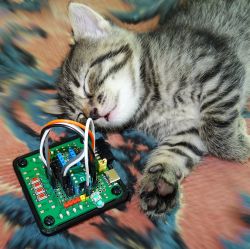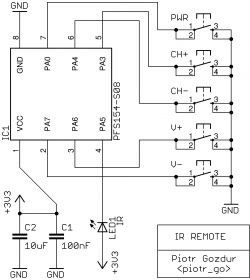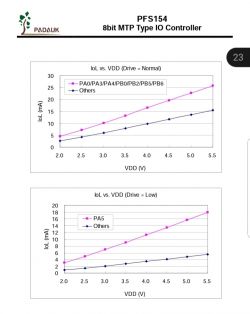
Hello, after a long break. This time the Chinese ... chip from Taiwan was used to build an IR remote for TV from LG.
The remote control can turn on / off the TV, change the channel or the volume. The number of functions has been limited due to the small number of IO of the microcontroller.
The used PFS154 can be changed to PMS150C after a slight modification of the program.
Codes:
To find out how the original remote control works, I connected an analyzer to its transmitting diode.
The pilot transmits at a frequency of 38 kHz. First there is a longer start bit, then 8 data bits + the same 8 bits only inverted, then another 8 data bits + negated 8 bits, finally a short stop bit.
Holding the key down causes sending a slightly different start bit every 100 ms without additional data.
The frequency of 38 kHz is generated by software:
Code: AVR assembler
Similarly with "emptiness":
Code: AVR assembler
In the "a" register, the signal length.
Diagram:

I gave up the diode current limiting resistor
The current capacity of the pin at a short-circuit to plus 3.3 V is 24 mA (measured).
* in before covidowo / wojnej currency, 2019 BC (before covid)
Cool? Ranking DIY







